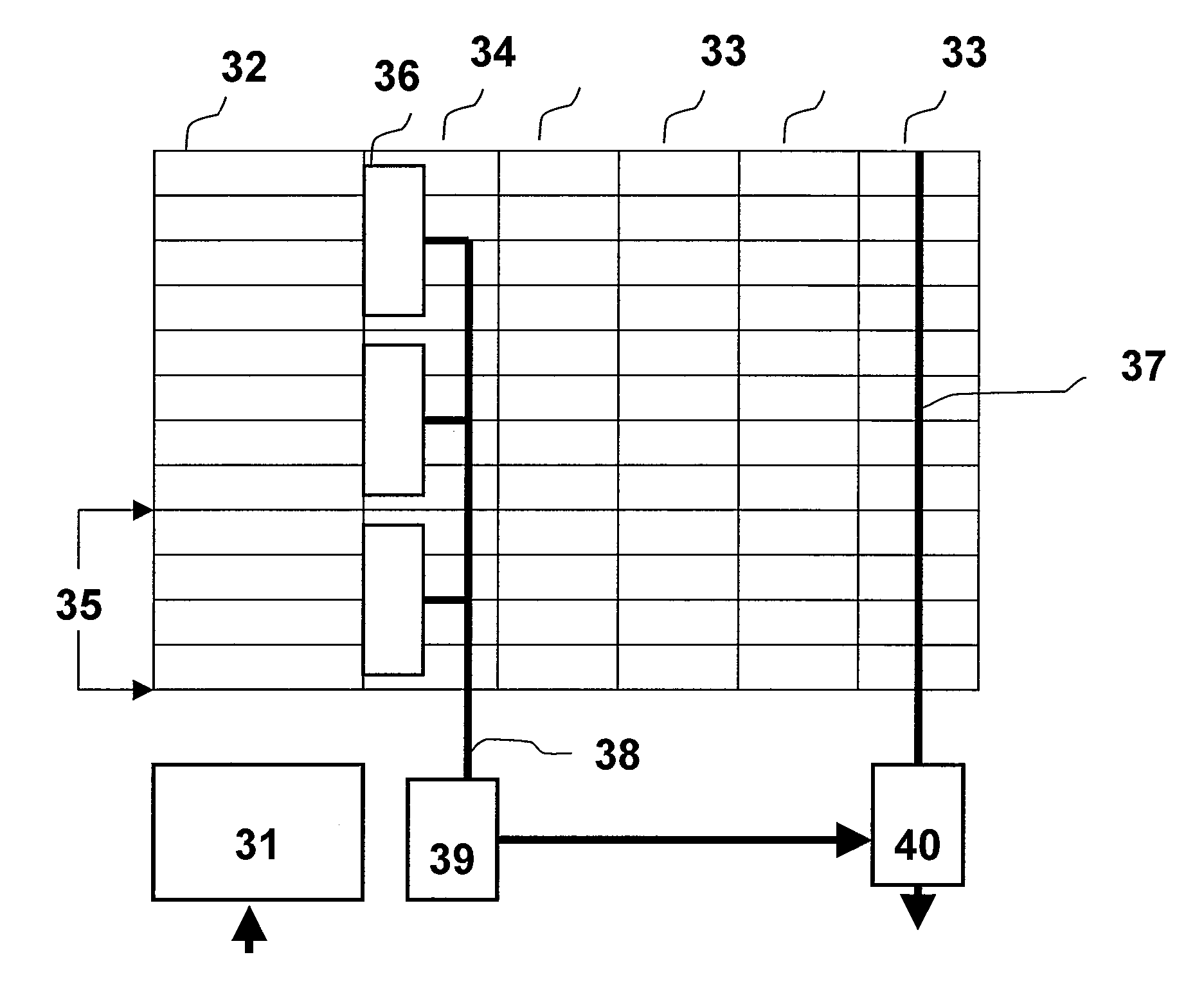Self-timing read architecture for semiconductor memory and method for providing the same
a read architecture and read technology, applied in the direction of information storage, static storage, digital storage, etc., can solve the problem of small statistical deviation between the predetermined voltage created on the bit line and the arrival of the ‘sense-on’ signal, and achieve the effect of minimizing resistance differences
- Summary
- Abstract
- Description
- Claims
- Application Information
AI Technical Summary
Benefits of technology
Problems solved by technology
Method used
Image
Examples
Embodiment Construction
[0027]FIG. 1 shows the block diagram of a semiconductor memory device presently used. The device includes a control circuit 11, a decoder circuit 12, a memory cell array 13, a read write amplifier 14, a dummy word decoder 15, a dummy word line 16, a dummy memory cell 17, and a dummy bit line 18. During a read operation, the decoder circuit 12 selectively activates a word line of a memory cell array 13 when a clock signal and an address signal are supplied to the control circuit 11 from an exterior of the device. The decoder circuit supplies a read signal to a memory cell 19. The read signal propagates along the path P1, P2, P3. Data read from the memory cell 19 is then supplied to the read—write amplifier through a path P4. In parallel the dummy word decoder 15 activates the dummy word line 16 based on a clock signal CK, and the address signal ADDRESS supplied to the control circuit 11 from the exterior of the device, thereby supplying a read signal to the dummy memory cell 17. The ...
PUM
 Login to View More
Login to View More Abstract
Description
Claims
Application Information
 Login to View More
Login to View More - R&D
- Intellectual Property
- Life Sciences
- Materials
- Tech Scout
- Unparalleled Data Quality
- Higher Quality Content
- 60% Fewer Hallucinations
Browse by: Latest US Patents, China's latest patents, Technical Efficacy Thesaurus, Application Domain, Technology Topic, Popular Technical Reports.
© 2025 PatSnap. All rights reserved.Legal|Privacy policy|Modern Slavery Act Transparency Statement|Sitemap|About US| Contact US: help@patsnap.com



